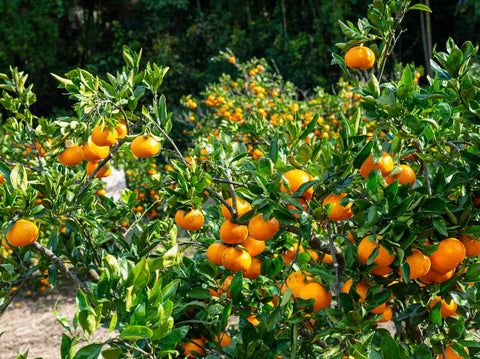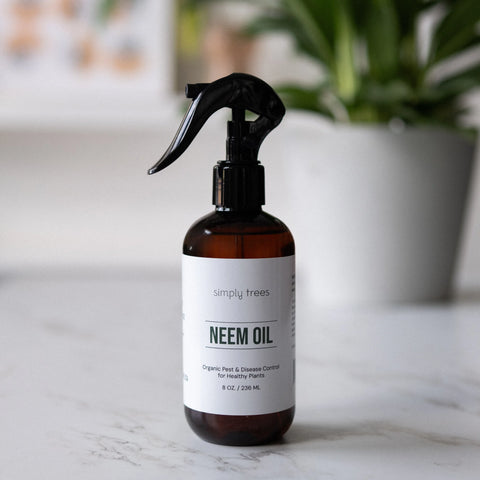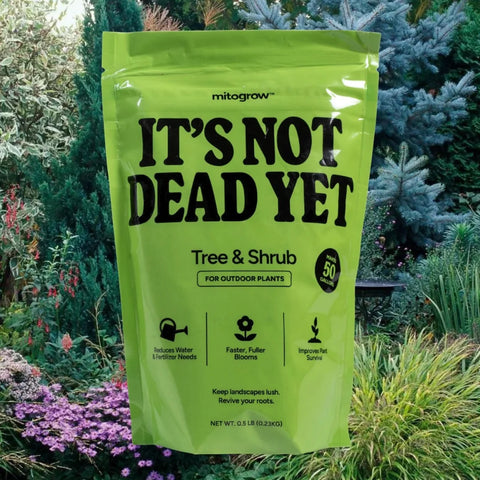Fig trees are one of the most rewarding fruit trees for home gardeners. They’re heat-tolerant, fast-growing, and produce delicious, sweet fruit that’s perfect for eating fresh, drying, or baking into your favorite recipes.
Whether you’re growing Black Mission, Brown Turkey, or Chicago Hardy figs, this guide covers everything you need to know to keep your tree thriving—indoors or out.
→ Shop All Fig Trees at Simply Trees
Quick Variety Snapshot
-
Rich, purple-black skin with sweet pink flesh
-
Ideal for warm climates
-
Great for fresh eating, drying, or preserves
-
Medium-sized, bronze skin with reddish-pink flesh
-
Sweet and mild flavor
-
Great for container growing, reliable fruiter
-
Cold-hardy down to 0°F
-
Produces small-to-medium purple-brown fruit
-
Ideal for colder zones and overwintering outdoors with protection
Sunlight & Location
-
Full sun is key—figs need at least 6–8 hours of direct sun daily to produce abundant fruit.
-
Choose a south- or west-facing spot with good airflow.
-
In cooler climates, a heat-reflective wall (like brick or stone) can help boost warmth and extend the growing season.
Watering & Soil Requirements
-
Figs prefer well-draining soil—sandy loam is ideal.
-
Keep the soil consistently moist but not soggy, especially in the first 1–2 years.
-
Once established, figs are fairly drought tolerant.
Watering Tips:
-
Deep water when the top 2 inches are dry.
-
Container-grown figs will dry out faster—check moisture often during hot weather.
-
Mulch around the base (keep a few inches from the trunk) to conserve moisture and reduce weeds.
Fertilizing
-
Figs do not require heavy fertilizing.
-
Use a gentle organic fruit tree fertilizer in early spring and again in mid-summer if needed.
-
Avoid high-nitrogen fertilizers—they promote leaf growth at the expense of fruit.
If your fig tree is already growing vigorously, skip the second feeding.
Pruning Fig Trees
-
Prune in late winter or very early spring while the tree is still dormant.
-
Remove dead, damaged, or crossing branches.
-
Thin out dense areas to improve light penetration and airflow.
-
For container figs, prune to maintain shape and height.
Pro tip: For increased fruit production, pinch off the tips of young branches in spring to encourage side shoots.
Growing Figs in Containers
Fig trees are extremely well-suited to container growing—especially Brown Turkey and Black Mission.
-
All of our 3 gallon fig trees are shipped in 10–12 inch nursery containers, ideal for patio or balcony gardening.
-
When repotting, choose a container 1–2 inches wider than the current pot, eventually sizing up to a 15–25 gallon pot for long-term growth.
-
Use pots with drainage holes and a lightweight, well-draining soil mix.
-
Place containers in full sun and rotate every few weeks for even growth.
-
In colder climates, containers can be moved into a garage or basement for winter dormancy.
→ Shop Fig Trees at Simply Trees
Cold Hardiness & Winter Protection
-
Chicago Hardy Fig: Can survive outdoors in Zone 5–6 with protection.
-
Brown Turkey & Black Mission: Best for Zones 7–10; protect in colder areas.
Overwintering tips (for cold zones):
-
Mulch heavily around the base and cover the trunk with burlap or frost cloth.
-
For extra protection, build a wire cage around the tree and fill with leaves or straw.
-
Alternatively, grow in a pot and overwinter in a cool, dark garage (~32–45°F). Water sparingly.
Pests & Problems
Figs are relatively pest-free, but watch for:
-
Aphids or scale insects – treat with insecticidal soap or neem oil
-
Fig rust or leaf spot – remove affected leaves, improve airflow, and avoid overhead watering
-
Birds & squirrels – harvest early and use netting if needed
Fruiting Timeline & Harvest Tips
-
First harvest: Most fig trees fruit within 1–2 years of planting, especially larger sizes.
-
Two crops: Some varieties (like Brown Turkey) may produce a small early crop in early summer (breba crop), followed by a larger main crop in late summer to fall.
-
Figs do not ripen after picking, so wait until they’re fully soft and drooping from the branch.
Ripe figs should feel soft, smell sweet, and show a slight split near the neck.
Final Thoughts
Fig trees are surprisingly low maintenance and incredibly rewarding. Whether you’re growing Black Mission, Brown Turkey, or Chicago Hardy, these fruit trees deliver beauty, shade, and delicious harvests with just a bit of seasonal care.
→ Shop Fig Trees at Simply Trees
Whether you’re planting in a backyard or growing on a patio, figs make a fantastic addition to any edible garden.





